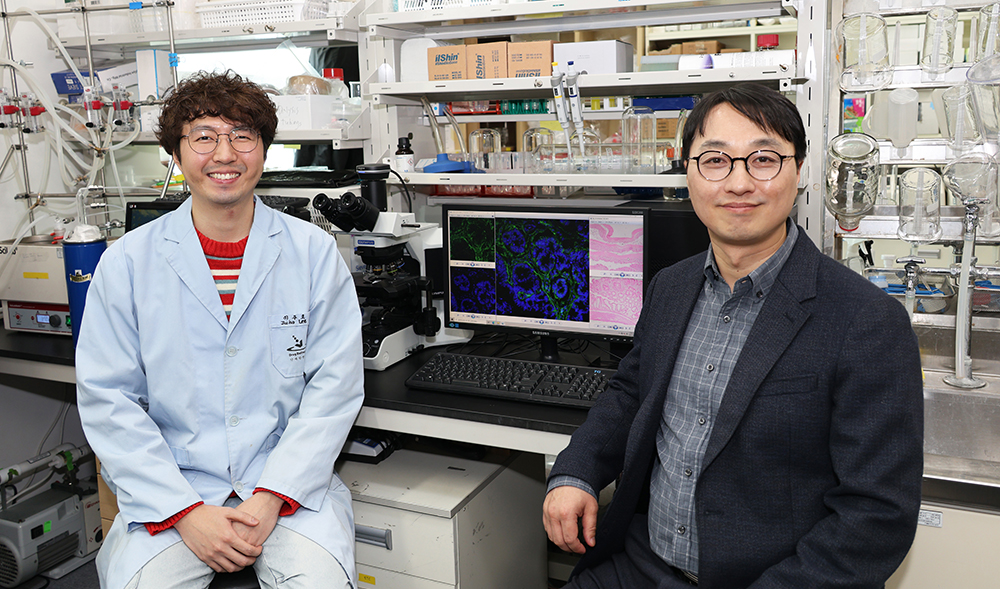
On-site sol-gel-sol transition of alginate enables reversible shielding/deshielding of tumor cell-activated nanoconjugates for precise local colorectal cancer therapy

Although local colorectal cancer (CRC) therapy can be achieved by delivering CRC-targeted nanoparticles directly to the tumor tissues within the colorectal cavity, bypassing systemic circulation through the oral administration route, physical entrapment of the nanoparticles by the small intestinal epithelium, and premature drug loss before reaching the colorectal cavity results in limited local therapeutic efficacy. To overcome these limitations, this study aimed to develop CRC cell-activated nanoconjugates (CTNCs)-in-alginate (Alg/CTNCs). After oral administration, Alg/CTNCs undergo a sol-gel transition upon exposure to gastric acid, and the alginate gel matrix effectively shields the incorporated CTNCs, preventing unwanted interactions with the intestinal epithelium and drug loss before reaching the colorectum. Upon reaching the colorectum, the elevated pH triggers a gel-sol transition in the gelated Alg/CTNCs, and the deshielded CTNCs from the alginate gel matrix show highly CRC-selective accumulation. Finally, drugs are released in response to intracellular esterase, ultimately leading to potent local antitumor effects without systemic side effects. These findings suggest that the reversible shielding/deshielding of nanomaterials during gastrointestinal tract passage, along with intratumoral environment-activated drug release strategies, enables precise local CRC therapy.
- Authors (College of Pharmacy, Pusan National University): Juho Lee (1st author), Jin-Wook Yoo (corresponding author)
- Title of original paper: On-site sol-gel-sol transition of alginate enables reversible shielding/deshielding of tumor cell-activated nanoconjugates for precise local colorectal cancer therapy
- Journal: Chemical Engineering Journal
- Web link: https://doi.org/10.1016/j.cej.2024.158935

 943유진욱교수1.jpg
(598KB)
943유진욱교수1.jpg
(598KB)